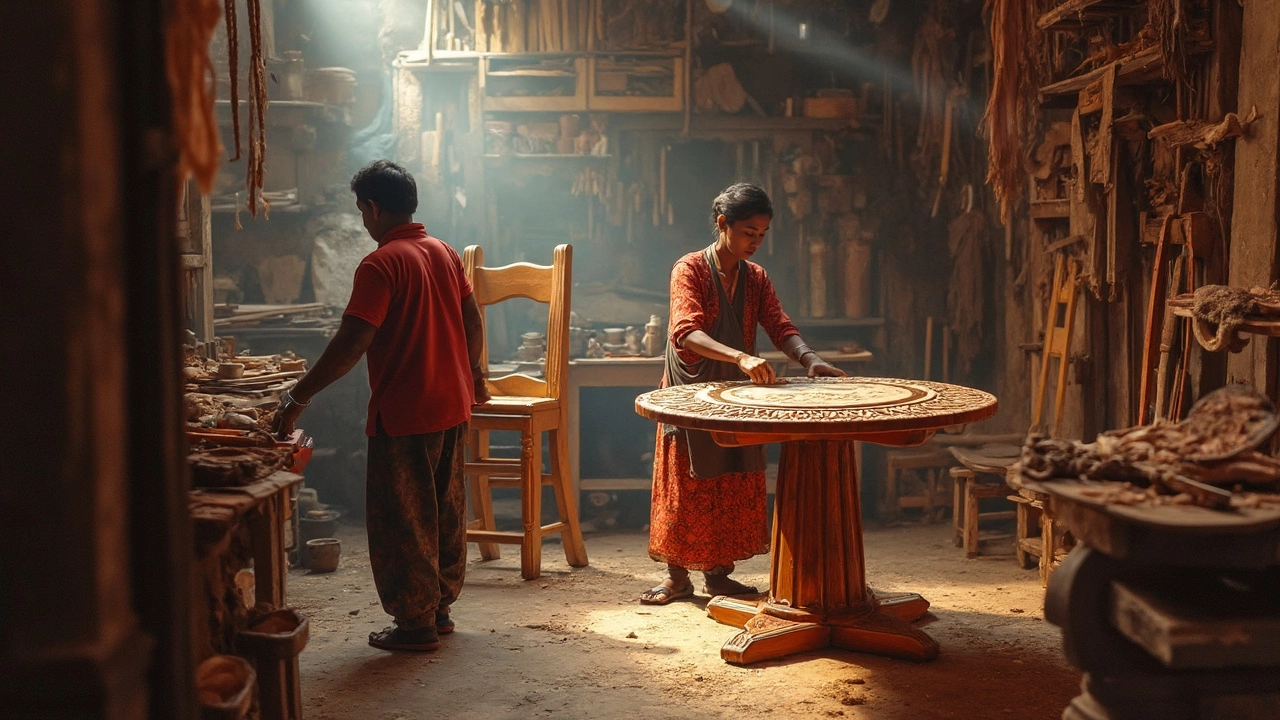Furniture Manufacturers in India: What’s Driving the 2025 Boom?
If you’ve been watching the Indian home‑decor scene, you’ve probably noticed a surge in new furniture brands and factories. Why now? A mix of urban housing growth, more people working from home, and government pushes for Make‑in‑India are turning furniture manufacturing into a hot ticket.
Small apartments in metros need space‑saving designs, while tier‑2 cities want affordable, sturdy pieces. This split means manufacturers are juggling smart, modular furniture with mass‑produced budget lines. The result? Faster production cycles, lower costs, and a wider range of styles for buyers.
Key Trends Shaping Furniture Makers Today
First, sustainability isn’t a buzzword—it’s a requirement. More factories are using reclaimed wood, recycled metal, and low‑VOC finishes to win eco‑conscious customers and meet stricter regulations.
Second, technology is changing the game. CNC routers, AI‑driven demand forecasting, and automated upholstery lines cut lead times dramatically. Even 3‑D printed components are entering the market for custom hardware.
Third, local sourcing is becoming a strength. By partnering with regional timber suppliers and textile mills, manufacturers reduce logistics costs and keep prices competitive against imports.
How to Pick the Right Furniture Manufacturer for Your Business
When you’re scouting a partner, start with their production capacity. Ask how many units they can crank out in a month and whether they can scale up during peak seasons. A factory that can handle a 10‑% spike without compromising quality is a safe bet.
Next, evaluate their quality control process. Look for ISO certifications, regular third‑party audits, and a clear defect‑tracking system. Seeing a sample batch before you sign a contract can reveal a lot about their standards.Don’t forget to check their design flexibility. Some manufacturers specialize in flat‑pack furniture, while others excel at custom‑crafted pieces. Pick one that aligns with the style and price point you’re targeting.
Finally, consider their after‑sales support. Reliable warranty handling, quick replacement parts, and responsive customer service keep your end‑customers happy and protect your brand reputation.
By focusing on these factors, you’ll avoid common pitfalls like delayed shipments, inconsistent finishes, or hidden cost overruns.
In short, the Indian furniture manufacturing scene is thriving thanks to urban demand, green initiatives, and tech upgrades. Whether you’re a retailer looking for a steady supplier or a startup aiming to launch a new line, the right partner can give you the edge you need in 2025 and beyond.
Is IKEA Making Money in India? A Look at Their Furniture Gamble
IKEA arrived in India with grand plans and big dreams, but the Indian market isn’t an easy nut to crack. This article digs into whether IKEA’s huge investments are finally showing profits. Find out how they’re adapting to Indian tastes, what challenges slow them down, and the creative ways they’re trying to attract more buyers. You’ll get real numbers and practical insights to assess whether IKEA is actually making money in India. Plus, there are handy tips if you’re thinking of following in their footsteps.
Read MoreSaharanpur: India's Hub for Timeless Wooden Furniture
Saharanpur, located in the Indian state of Uttar Pradesh, is famed for its exquisite wooden furniture. Known for intricate designs and high-quality craftsmanship, the city is a go-to destination for furniture enthusiasts. Local artisans utilize traditional techniques to craft everything from elegant tables to detailed cabinets. Besides aesthetics, the furniture from Saharanpur is celebrated for its durability and sustainability. Discover what makes Saharanpur a standout in the world of wooden furniture.
Read More



